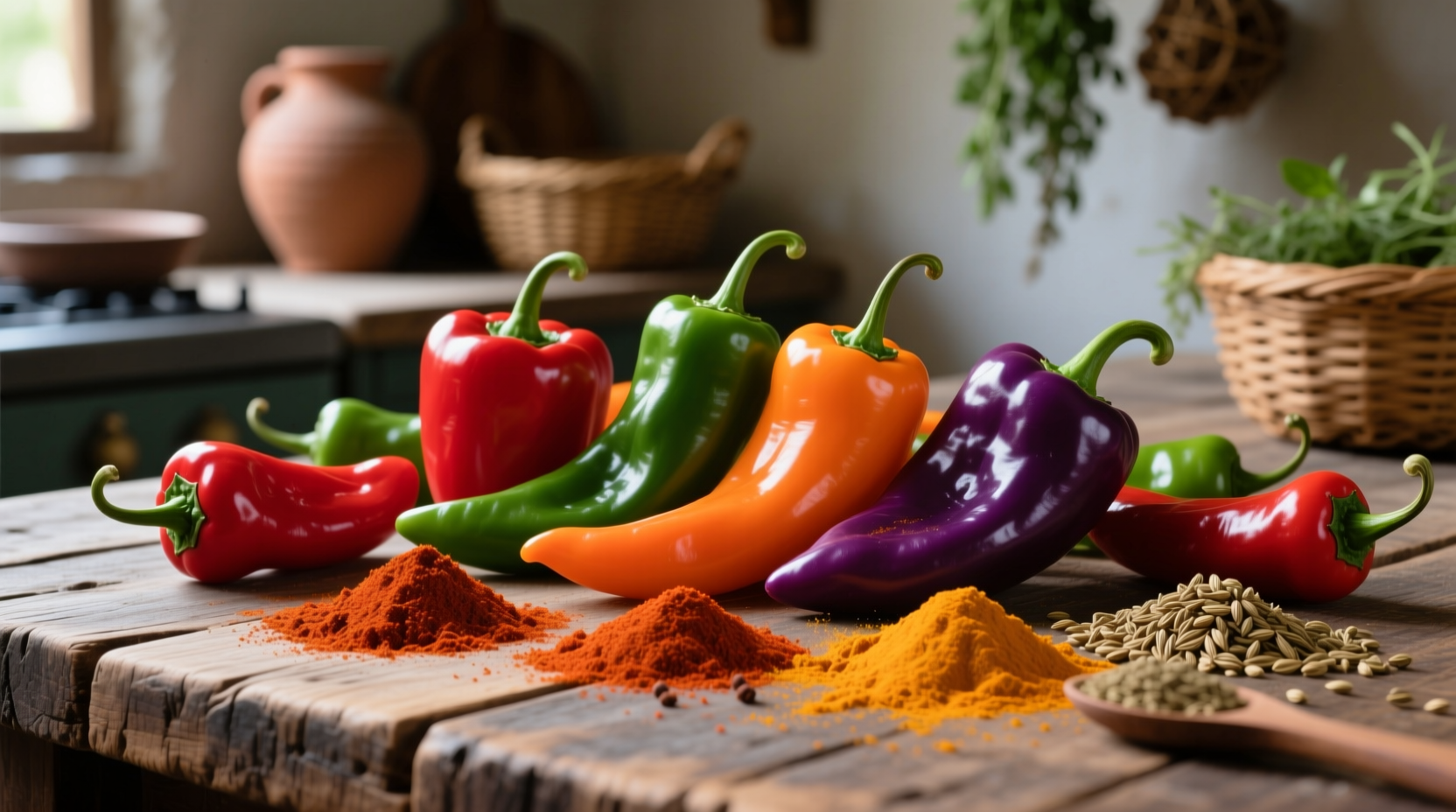Discover exactly what spices are in chili and how to use them effectively in your cooking. This comprehensive guide reveals the essential spice blend that creates authentic chili flavor, plus regional variations and professional techniques to elevate your dish from ordinary to extraordinary. Whether you're a beginner or experienced cook, you'll learn precise spice ratios, timing secrets, and how to adjust flavors for different dietary needs.
The Core Spice Profile of Authentic Chili
While chili recipes vary widely across regions and cultures, certain spices form the essential foundation of any authentic chili. These ingredients work together to create that distinctive deep, complex flavor profile we associate with well-made chili.
| Essential Spice | Flavor Profile | Typical Ratio (per lb meat) | Key Chemical Compound |
|---|---|---|---|
| Chili powder | Earthy, slightly sweet, moderate heat | 2-3 tablespoons | Capsaicinoids |
| Cumin | Warm, earthy, slightly smoky | 1-2 tablespoons | Cuminaldehyde |
| Garlic powder | Pungent, savory, aromatic | 1-2 teaspoons | Alliin |
| Onion powder | Sweet, savory base note | 1-2 teaspoons | Thiosulfinates |
| Oregano (Mexican preferred) | Floral, slightly bitter, herbal | 1 teaspoon | Carvacrol |
According to the USDA National Plant Germplasm System, authentic chili powder isn't a single spice but a carefully balanced blend typically containing ground chilies, cumin, garlic, and oregano. The specific chilies used determine the heat level and flavor nuances.
Regional Variations in Chili Spice Profiles
Chili's evolution across North America has created distinct regional spice traditions. Understanding these differences helps you recreate authentic regional styles or create your own signature blend.
Timeline of Chili's Evolution in American Cuisine
- Pre-1800s: Indigenous communities in what's now the American Southwest prepared meat stews with native chilies and wild spices
- 1828: First written recipe for "chili con carne" appears in Texas, featuring dried chilies, garlic, and cumin
- 1890s: Chili becomes popular street food in San Antonio, with standardized spice blends emerging
- 1937: Cincinnati chili develops with Mediterranean influences including cinnamon and allspice
- 1950s: Commercial chili powder blends become widely available, standardizing home cooking
- 1970s: New Mexico establishes official standards for regional chili varieties
- Present: Modern interpretations incorporate global spice influences while honoring traditional foundations
The Texas State Historical Association documents how chili spread from Mexican and Tejano communities to become a cultural staple across the American Southwest. Each region developed distinctive spice profiles based on available ingredients and cultural influences.
Specialty Variations for Different Dietary Needs
Modern chili adaptations maintain authentic flavor while accommodating various dietary requirements. Understanding these context boundaries ensures your chili satisfies everyone at the table.
Vegetarian and Vegan Chili
When making meatless chili, boost umami with:
- Smoked paprika (1/2-1 teaspoon) - adds depth lost from absence of meat
- Miso paste (1 tablespoon) - provides savory complexity
- Cocoa powder (1 teaspoon) - enhances richness without dairy
Low-Sodium Chili Options
Reducing salt doesn't mean sacrificing flavor. The USDA Food and Nutrition Information Center recommends these techniques:
- Double the garlic and onion powder (naturally flavorful without sodium)
- Add acid with lime juice or vinegar to enhance perceived saltiness
- Use fresh herbs like cilantro in the final stages for brightness
- Toast whole spices before grinding to intensify natural flavors
When and How to Add Spices for Maximum Flavor
The timing of spice addition dramatically affects your chili's final flavor profile. Professional chefs follow this sequence:
- Dry spices (cumin, chili powder): Bloom in hot oil for 30-60 seconds before adding liquids to release essential oils
- Dried herbs (oregano): Add early in cooking to allow flavors to meld
- Fresh herbs (cilantro): Stir in during the last 5 minutes of cooking
- Acidic elements (vinegar, lime): Add at the end to brighten flavors
Food science research from the New Mexico State University Chile Pepper Institute confirms that blooming spices in fat increases flavor compound extraction by up to 40% compared to adding them directly to liquid.

Common Mistakes to Avoid with Chili Spices
Even experienced cooks make these spice-related errors that compromise chili flavor:
- Using stale spices: Ground spices lose potency after 6 months. Test freshness by rubbing between fingers - if aroma is weak, replace
- Adding all spices at once: Different spices require different activation methods and timing
- Over-relying on pre-made blends: Commercial chili powders vary widely in quality and composition
- Not adjusting for heat tolerance: Provide heat customization options at serving time
Remember that authentic chili develops flavor through slow cooking. The USDA spice database shows that extended cooking time allows spice compounds to interact, creating more complex flavor molecules than short cooking periods.
Creating Your Signature Chili Blend
Once you understand the fundamentals, experiment with these professional techniques:
- Add a pinch of cinnamon (1/8 teaspoon) for subtle warmth in Texas-style chili
- Incorporate a square of dark chocolate (70% cacao) for depth in New Mexico-style
- Use chipotle powder (1/2 teaspoon) for smoky heat instead of liquid smoke
- Finish with a dash of fish sauce (1/4 teaspoon) to enhance umami without fishy flavor
The key to perfect chili spice balance is tasting and adjusting throughout the cooking process. Start with conservative amounts, then gradually increase until you achieve your desired flavor profile. Remember that flavors continue to develop as chili sits, so avoid over-seasoning near the end of cooking.











 浙公网安备
33010002000092号
浙公网安备
33010002000092号 浙B2-20120091-4
浙B2-20120091-4